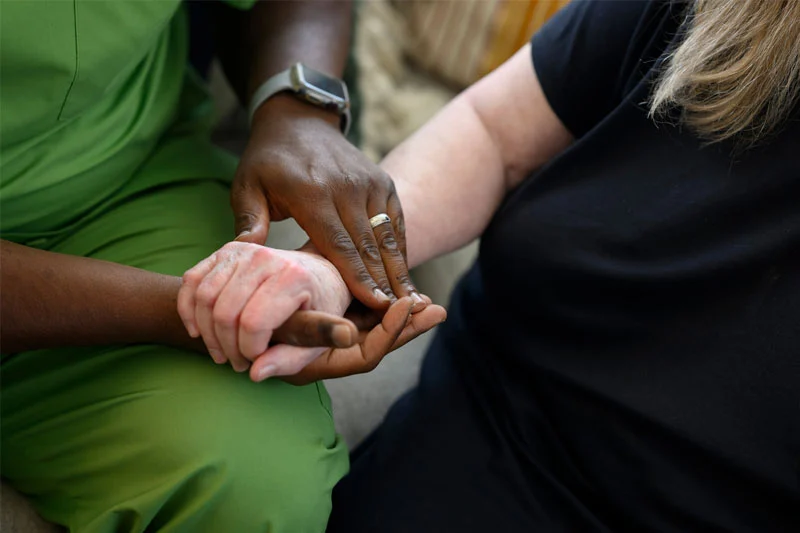- Courses
- GS Full Course 1 Year
- GS Full Course 2 Year
- GS Full Course 3 Year
- GS Full Course Till Selection
- Answer Alpha: Mains 2025 Mentorship
- MEP (Mains Enrichment Programme) Data, Facts
- Essay Target – 150+ Marks
- Online Program
- GS Recorded Course
- Polity
- Geography
- Economy
- Ancient, Medieval and Art & Culture AMAC
- Modern India, Post Independence & World History
- Environment
- Governance
- Science & Technology
- International Relations and Internal Security
- Disaster Management
- Ethics
- NCERT Current Affairs
- Indian Society and Social Issue
- NCERT- Science and Technology
- NCERT - Geography
- NCERT - Ancient History
- NCERT- World History
- NCERT Modern History
- CSAT
- 5 LAYERED ARJUNA Mentorship
- Public Administration Optional
- ABOUT US
- OUR TOPPERS
- TEST SERIES
- FREE STUDY MATERIAL
- VIDEOS
- CONTACT US
Bridging the Palliative Care Gap in India
Bridging the Palliative Care Gap in India

Why in the News?
- There is an urgent need to include palliative care as a regular part of India’s health-care system.
- At present, it is not well-funded, rarely used, and hard to access, especially in rural and remote areas.
- As more people suffer from long-term illnesses like cancer, diabetes, and heart or lung diseases, there is a growing need for Palliative care.
What are the Key Highlights
- Importance of Palliative Care
- Palliative care offers relief from pain, emotional distress, social, and spiritual suffering, focusing on quality of life, not just disease eradication.
- WHO estimates 40 million people globally need palliative care annually, with 78% in low- and middle-income countries.
- In India, where an estimated 7 to 10 million people require palliative care annually, only 1-2% have access to it.
- Current Status in India
- Despite being part of the National Health Policy 2017, implementation remains weak.
- Only 21 out of 36 states/UTs have registered palliative care facilities.
- India’s doctor-population ratio is 1:834, better than WHO’s norm of 1:1000, but palliative care specialists are very few.
- Linking with medical education
- Need to Train Doctors in Palliative Care
- Doctors, especially in remote areas, need proper skills and empathy to care for patients at the end of life.
- Integrating palliative care into the MBBS curriculum is essential to ensure all future doctors are prepared.
- Ongoing Efforts
- Projects by the Indian Council of Medical Research (ICMR) and AIIMS (All India Institute of Medical Sciences) are making gradual progress in including palliative care in medical training.
- Utilizing India’s Large Health Workforce
- India has:
- 34.33 lakh registered nurses
- 13 lakh allied health-care workers
- By empowering and training this workforce, the country can bridge the gap and extend care to rural and underserved regions.
- Policy Recommendation
- Policymakers should focus on the long-term benefits of investing in palliative care:
- Improved patient outcomes
- Reduced burden on the health-care system
- Integration with Health Policy & Insurance
- Ayushman Bharat and other insurance schemes can support access.
- Public-private partnerships and NGO involvement can boost services.
- Urgent need for dedicated funding and inclusion of palliative care in tertiary and primary health systems.
- Public Awareness and Cultural Shift
- Public campaigns can raise awareness about palliative care, encourage early access, and change perceptions.
- Learning from the U.S. model, which focuses on end-of-life dignity, insurance support, and patient-centered care.
Challenges and Way Forward
|
Challenges |
Way Forward |
|
Poor public awareness and cultural taboos around palliative care |
Launch national-level public education campaigns on palliative care benefits. |
|
Shortage of trained palliative care professionals |
Integrate palliative care into MBBS curriculum and provide continuous medical education. |
|
Inadequate government funding and infrastructure |
Allocate dedicated funds for infrastructure and service expansion. |
|
Low coverage by insurance and financial barriers for families |
Expand schemes like Ayushman Bharat to cover palliative care. |
|
Poor integration in rural and underserved areas |
Leverage telemedicine ( giving medical care through phone or video) and partner with NGOs to reach remote areas. |
|
Fragmented implementation across states |
Ensure policy uniformity and set national targets for palliative care access |
Conclusion
Palliative care is a moral, medical, and economic need for India. A strong strategy with better policies, training, insurance, and education is key. Learning from global models and adapting them as per the needs of India can ensure dignified and affordable care for all.
|
EnsureIAS Mains Question: Q. Discuss the need for integrating palliative care into India’s healthcare system. What steps can be taken to improve its accessibility and effectiveness, especially in underserved regions? (250 Words) |
|
EnsureIAS Prelims Question: Q. Which of the following statements about palliative care in India is/are correct?
Select the correct answer using the code below:
Answer: b Explanation: Statement 1 is correct: Palliative care is for various serious illnesses, not just cancer. Statement 2 is incorrect: India's doctor-population ratio is 1:834, better than WHO’s 1:1000. Statement 3 is correct: Task-shifting refers to giving trained health workers some medical duties. |




